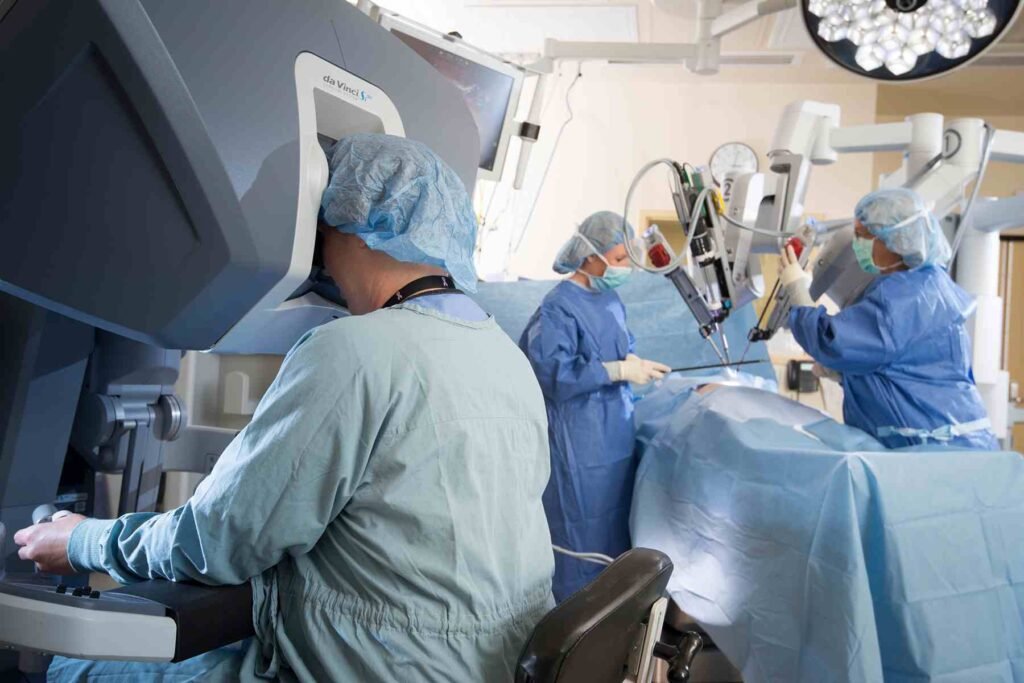
Gynecologic Robotic Surgery: Benefits, Procedures and More
Gynecologic Robotic Surgery: In this article, we are going to discuss the latest techniques in the field of gynaecology, their benefits, and different procedures.
Gynecologic Robotic Surgery: An Overview
Gynecologic robotic surgery, also known as robotic-assisted surgery, is a minimally invasive procedure and has emerged as a cutting-edge technique in the field of gynaecology. It is an advanced form of minimally invasive and laparoscopic surgery. Robotic surgery in gynaecology involves a computer-controlled system or a controlled robot for assistance during the surgery.
It is a great technique in comparison to traditional surgical approaches, as patients experience several advantages such as a faster recovery period, smaller incisions, and less postoperative pain.

Gynecologic Robotic Surgery involves a range of minimally invasive surgeries using robotic technology to treat various gynaecological conditions.
Advanced robotic systems assist surgeons in performing intricate surgeries with precision and efficiency.
What Are the Conditions That Can Be Treated Using Gynecologic Robotic Surgery?

Some conditions that can be effectively treated using gynecologic robotic surgery include the following:
- Endometriosis
- Abdominal and pelvic pain
- Ovarian cysts
- Uterine fibroids
- Pelvic organ prolapse
- Abnormal uterine bleeding
- Gynaecologic cancers such as ovarian, cervical, and uterine cancer
If you’re dealing with the above conditions, consult your gynaecologist to discuss potential treatment options.
What Are the Benefits of Gynecologic Robotic Surgery?
Robotic Gynecologic surgery is an advanced approach to treating various gynecologic conditions. There are various advantages to gynecologic robotic surgery, and below are some of them.
- Minimally invasive
Robotic gynaecology is a minimally invasive procedure that requires fewer or smaller incisions in comparison to traditional surgery. It results in less trauma to the surrounding tissues, reduces post-operative pain, and decreases blood loss during the procedure.
- Lower risk of infection
Minimally invasive techniques in robotic gynecologic procedures reduce the risk of infection during or after the procedure, leading to improved overall health for the individual.
- Better visualisation during surgery
During robotic-assisted surgeries, high-resolution and 3D images help surgeons get a magnified view of the operating area. This helps doctors perform the surgery when the treatment area is typically small and difficult to see.
- Treat a wide range of gynecologic conditions
Robotic surgery can address a wide range of gynaecological conditions, such as hysterectomy, uterine fibroids, endometriosis, ovarian cysts, and others.

- Faster recovery time
One of the advantages of robotic-assisted gynecologic surgery is that it involves a smaller incision, which typically leads to reduced post-operative pain and a quick recovery time. Whereas traditional surgery includes large incisions that result in more discomfort during recovery and also have a longer healing period.
- Improved dexterity
The use of robotic instruments during the procedure allows surgeons a greater range of motion and flexibility, which helps them perform complex procedures with ease.
Gynecologic Robotic Surgery Procedure
Before the Surgery:
Before the procedure, your doctor will perform a thorough evaluation, a physical examination, an imaging test, and pre-operative tests to confirm you’re medically fit for the procedure.
During this time, you can also ask your surgeon about the risks, benefits, and other concerns about the surgical process.
During the Surgery:
- The robotic gynecologic procedure is performed with the assistance of a robot, such as the da Vinci surgical system.
- During the procedure, robotic arms equipped with surgical instruments are used. The surgeon guides the robot using the controls in the console. The robot replicates the surgeon’s hand movements.

- The special surgical instruments used in this surgery are smaller, as well as more flexible than the human hand, which allows the doctor to access the operative area with minimal incisions. Thus, the surgeon can operate with enhanced precision and control during the procedure.
- The high-definition visuals provided by the robotic systems give a clear view of the surgical site. After the procedure, the robotic instruments are removed and the incisions are closed.
CONCLUSION
Robotic gynaecologic surgery is a significant development in the field of gynaecology. The minimally invasive nature of robotic surgery results in smaller incisions, reduced postoperative pain, and faster recovery times for patients.
Looking for robotic gynecologic surgery in Noida? Consult Dr Neha Gupta, one of the most experienced gynaecologists, with expertise in laparoscopy as well as robotic surgeries.